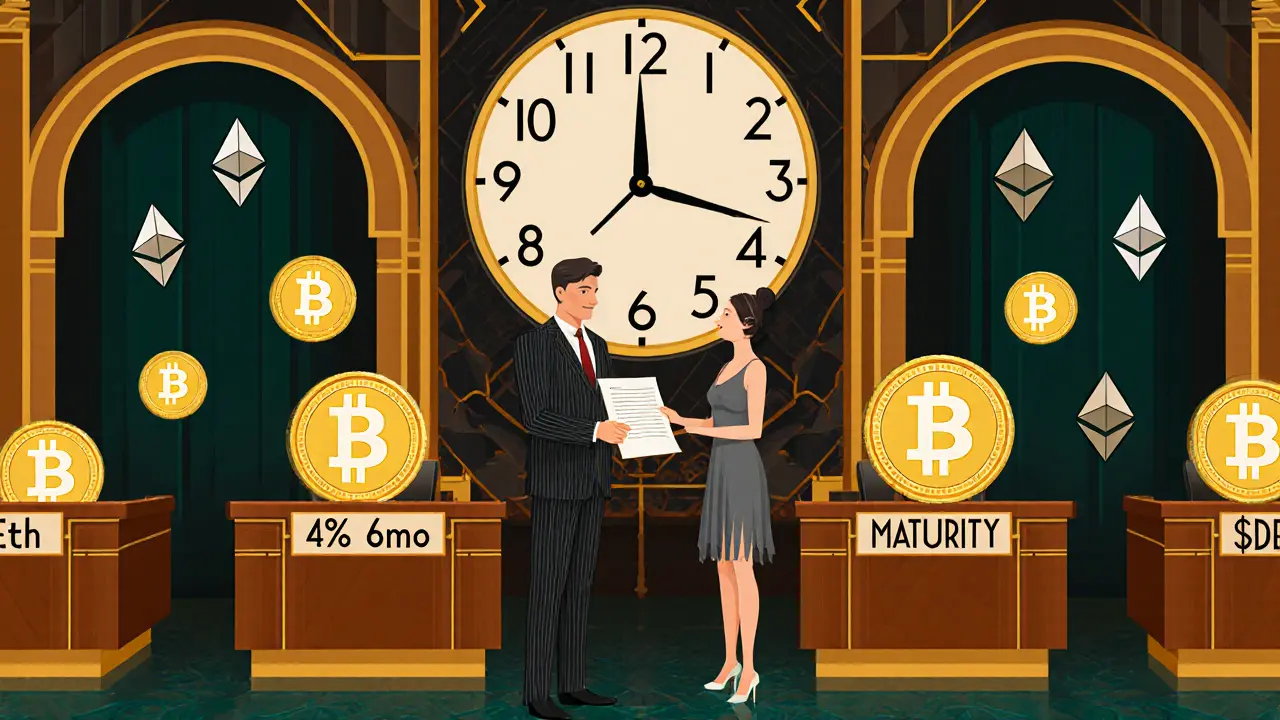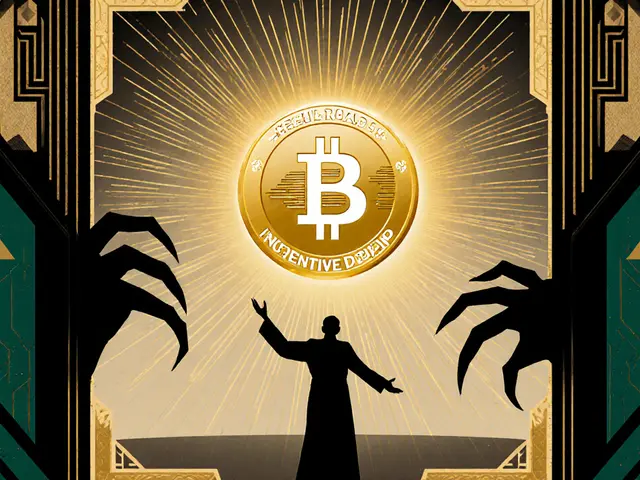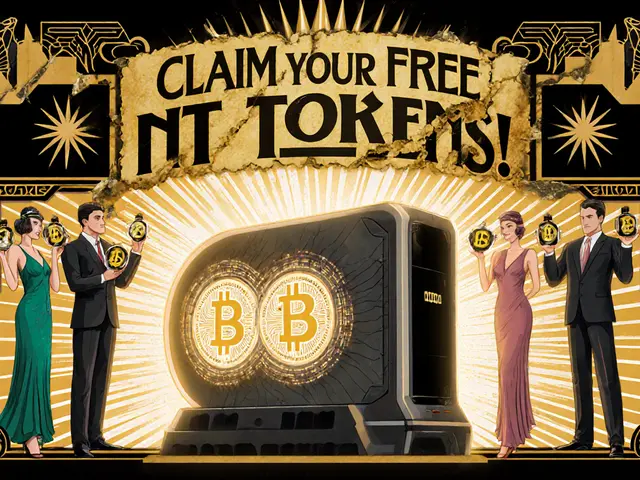Fixed-Rate Lending Calculator
Your Loan Details
Hifi Finance Insights
Hifi Finance allows you to lock in fixed interest rates for 3, 6, or 12 months using hTokens. Unlike variable-rate platforms like Aave or Compound, you know exactly what you'll earn upfront.
Key feature: Non-upgradeable smart contracts ensure rate guarantees can't be changed after locking in your rate
Results
Hifi Finance (HIFI) isn’t just another crypto coin. It’s a protocol built to solve a real problem in decentralized finance: the chaos of variable interest rates. While most DeFi platforms like Aave and Compound let lenders and borrowers gamble on fluctuating rates, Hifi Finance lets you lock in a fixed rate - like a bond - for a set time. If you’ve ever worried about your crypto loan interest suddenly jumping from 5% to 15%, Hifi Finance was made for you.
How Hifi Finance Works: Bonds in Crypto
Hifi Finance turns loans into tradable, bond-like tokens called hTokens. Here’s how it works: if you lend 10 ETH for six months at a fixed 4% annual rate, the protocol creates an hToken representing that debt. That hToken can be bought, sold, or held until maturity. At the end of six months, the borrower repays the principal plus interest. You don’t need to wait - you can sell your hToken anytime on the open market. This turns a static loan into a liquid asset.
This system is based on zero-coupon bond theory, a concept from traditional finance. Instead of paying interest monthly, the full return is paid at maturity. Hifi Finance uses non-upgradeable smart contracts on Ethereum to make sure no one can change the rules after you lock in your rate. That’s a big deal in crypto, where protocols often change terms overnight.
The HIFI Token: Governance, Not Utility
The HIFI token is the governance token of the protocol. It doesn’t give you a share of fees or staking rewards. Instead, it gives you voting power on protocol upgrades - like changing interest rate algorithms, adding new assets, or integrating new blockchains. You can delegate your vote to someone else if you don’t want to track every proposal.
As of November 2023, there are roughly 167 million HIFI tokens in circulation. The token price has been volatile, hitting an all-time high of $2.61 in September 2023, then settling around $0.25 by late November. Market cap numbers vary between platforms, which is common for smaller DeFi projects. The key takeaway: HIFI’s value comes from its role in governance, not speculation.
Why Hifi Finance Stands Out in DeFi
Most DeFi lending platforms are built for speed and volume. Aave and Compound together handle over $10 billion in locked value. But they only offer variable rates. That’s great if you’re chasing short-term gains - but terrible if you’re managing a crypto treasury, running a business, or planning long-term investments.
Hifi Finance fills that gap. It’s the only major protocol focused entirely on fixed-rate lending. Institutional investors - like crypto funds or DAO treasuries - use it to hedge against rate spikes. One user on Reddit said Hifi saved them during the March 2023 banking crisis when rates on other platforms spiked to 15%. They’d locked in 5% six months earlier and avoided massive losses.
That predictability is rare in crypto. And it’s exactly what traditional finance users expect.

The Downsides: Liquidity and Complexity
But Hifi Finance isn’t perfect. Its biggest weakness? Liquidity. Because loans are split into fixed-term buckets, liquidity is fragmented. If you want to lend USDC for 3 months, you’re competing with hundreds of other 3-month pools. Finding a match can be slow. And if you need to exit early, you might have to sell your hToken at a discount.
Another issue is the interface. It’s not beginner-friendly. You need a Web3 wallet like MetaMask, understand gas fees, and know how to navigate decentralized exchanges. The learning curve is steeper than Coinbase or Kraken. Even experienced DeFi users say the dashboard feels cluttered compared to Aave’s clean design.
Community feedback shows mixed results. On review sites, users rate Hifi Finance 3.7 out of 5. The top praise? Predictability (68% of positive reviews). The top complaints? Low liquidity (57%) and confusing UI (33%).
Real-World Assets and the Road Ahead
In late 2023, Hifi Finance made a major move: it started accepting real-world assets (RWAs) as collateral. That means you can now borrow against things like tokenized real estate or invoices - not just ETH or USDC. This aligns with a bigger trend in DeFi, where $5 billion in RWAs are now locked across protocols, up from just $500 million a year earlier.
The roadmap includes expanding to Polygon and Arbitrum in early 2024. That’s critical. Ethereum’s high gas fees have held back many users. If Hifi can bring its fixed-rate model to cheaper chains, adoption could jump.
Analysts are split. JPMorgan’s 2023 report questioned whether niche DeFi protocols can survive without massive liquidity. But Messari’s Ryan Wyatt predicts Hifi could capture 20-25% of the fixed-rate lending market by 2025 - a segment already growing at 30% annually.

Who Should Use Hifi Finance?
Hifi Finance isn’t for everyone. If you’re a casual crypto holder who just wants to earn interest on your stablecoins, stick with Coinbase or BlockFi.
But if you’re one of these, Hifi could be a game-changer:
- You manage a crypto treasury for a DAO or startup and need predictable expenses.
- You’re lending long-term and hate the uncertainty of variable rates.
- You’re interested in fixed-income crypto products as a hedge against volatility.
- You believe DeFi should mimic traditional finance - not replace it with chaos.
It’s also a good fit if you’re comfortable with Ethereum, understand gas fees, and don’t mind waiting for liquidity to appear.
Getting Started: A Simple Walkthrough
Here’s how to use Hifi Finance in 2025:
- Get a Web3 wallet (MetaMask or Coinbase Wallet).
- Buy some ETH and a stablecoin like USDC or DAI.
- Go to hifi.finance and connect your wallet.
- Choose whether you want to lend or borrow.
- Select the term (3, 6, or 12 months) and the fixed rate offered.
- Deposit your asset. The protocol mints your hToken.
- Track your position or sell your hToken on the secondary market.
Expect to spend 15-20 minutes on your first transaction. Gas fees can hit $10-$30 during network congestion. Use tools like Etherscan’s gas tracker to time your transactions.
Final Thoughts: Innovation With Risk
Hifi Finance isn’t trying to be the biggest DeFi platform. It’s trying to be the most predictable one. That’s a quiet, powerful mission. In a market full of hype and volatility, offering certainty is revolutionary.
It’s not without risk. Low liquidity, complex UX, and regulatory uncertainty around governance tokens are real concerns. But if institutional players start moving into DeFi with real capital - and they’re already doing that - Hifi Finance could become the go-to tool for fixed-income crypto strategies.
Right now, it’s a niche. But in a world where interest rates swing wildly, maybe that niche is exactly what the market needs.
Is Hifi Finance (HIFI) a good investment?
HIFI isn’t designed as a speculative asset. Its value comes from governance rights, not price appreciation. If you believe fixed-rate lending will grow in DeFi, holding HIFI gives you a voice in that future. But don’t buy it expecting quick gains. Price swings are high, and liquidity is thin. Only invest what you’re comfortable losing.
How is Hifi Finance different from Aave or Compound?
Aave and Compound offer variable interest rates that change every block based on supply and demand. Hifi Finance offers fixed rates for set terms - like a 6-month bond. You know exactly what you’ll earn or pay upfront. Hifi is slower and less liquid, but it’s predictable. Aave is fast and popular; Hifi is precise and niche.
Can I earn staking rewards with HIFI?
No. HIFI is a governance token only. You don’t earn interest or fees by holding it. To earn returns, you need to lend assets on the Hifi Finance protocol and receive hTokens. Those hTokens can be sold or held until maturity for fixed returns.
Is Hifi Finance safe to use?
The smart contracts are non-upgradeable and audited, which reduces the risk of backdoor changes. But like all DeFi, you’re exposed to smart contract bugs, Ethereum network congestion, and impermanent loss if you trade hTokens. Never deposit more than you can afford to lose. Use a hardware wallet for large amounts.
What assets can I lend on Hifi Finance?
As of late 2023, supported assets include ETH, USDC, DAI, and WBTC. The protocol has also started accepting tokenized real-world assets like real estate and invoices as collateral for borrowing. Always check the official site for the latest list before depositing.
Does Hifi Finance work on mobile?
There’s no official mobile app. You access Hifi Finance through a browser on your phone using a Web3 wallet like MetaMask. The interface is responsive but not optimized for small screens. For best results, use a desktop or tablet. The team has not announced plans for a native app as of late 2023.



